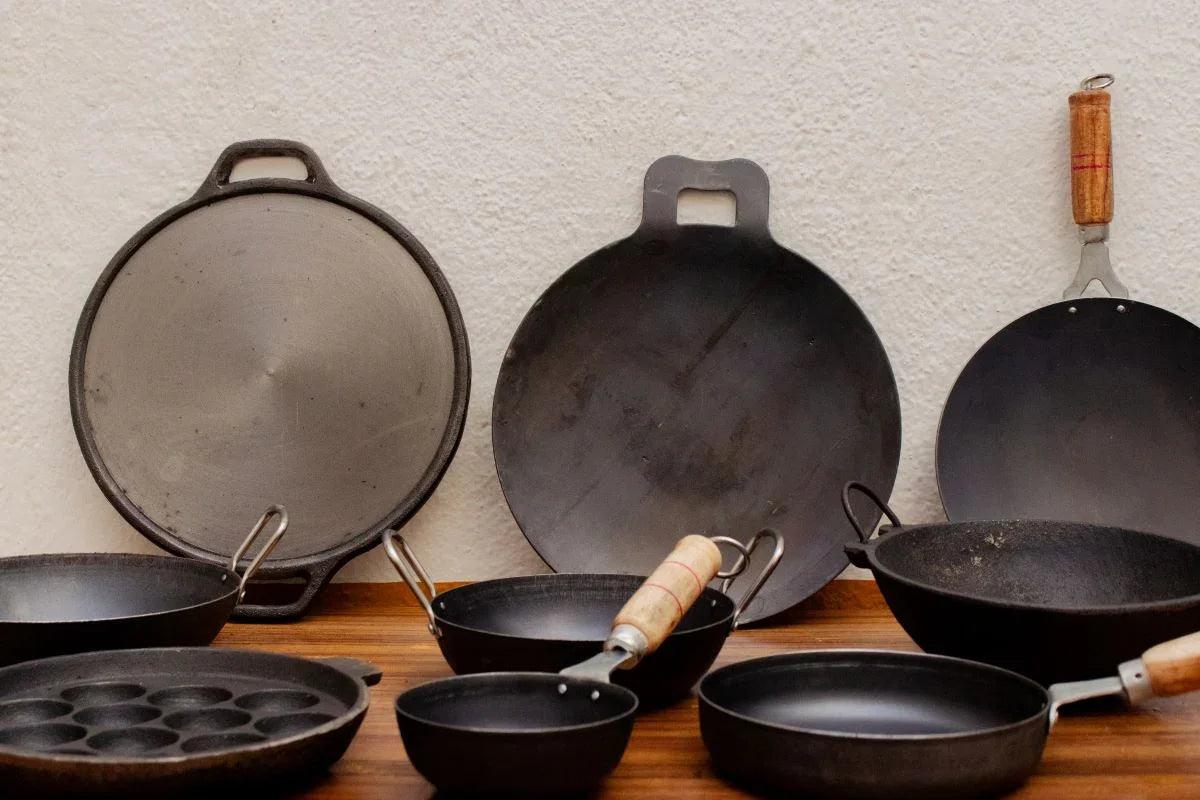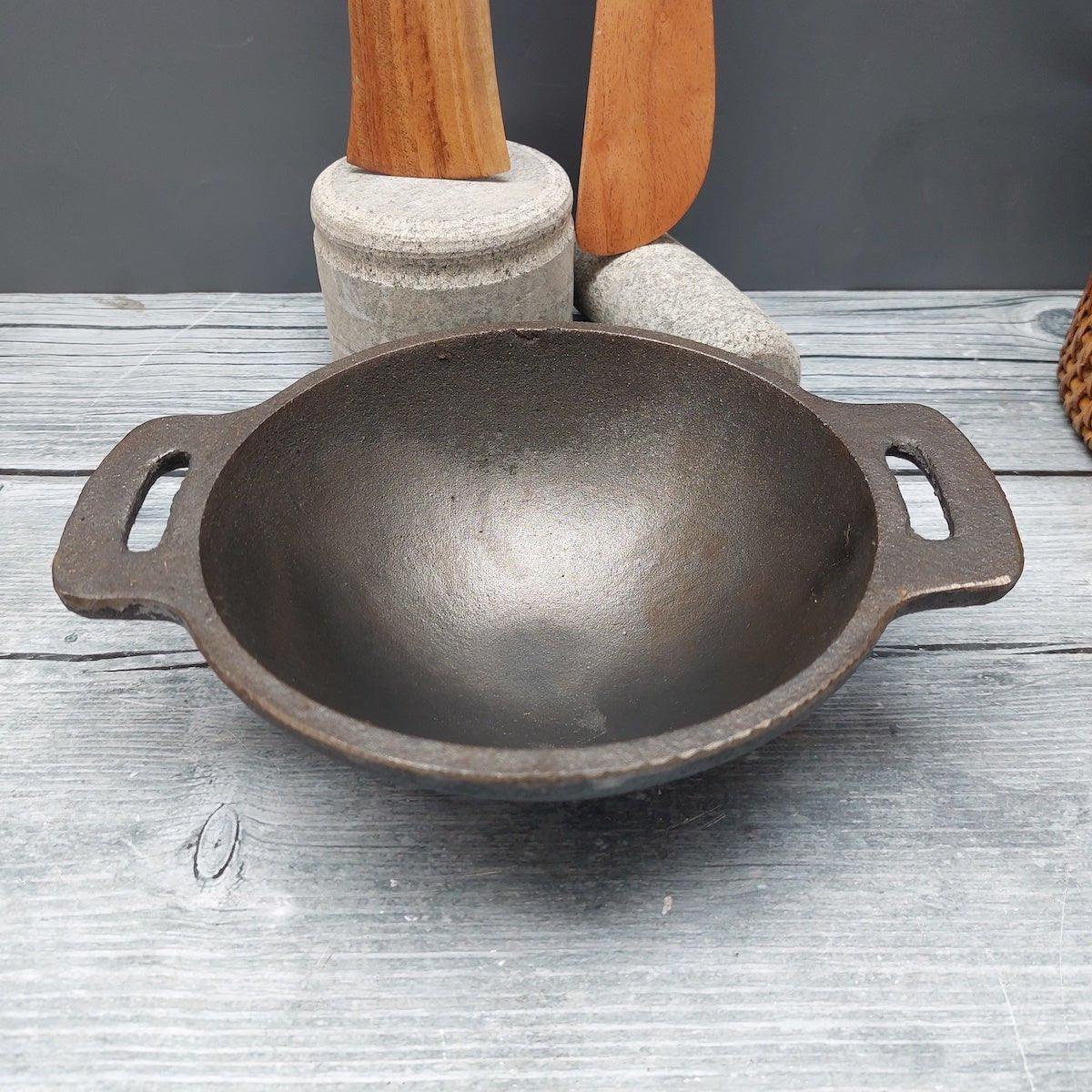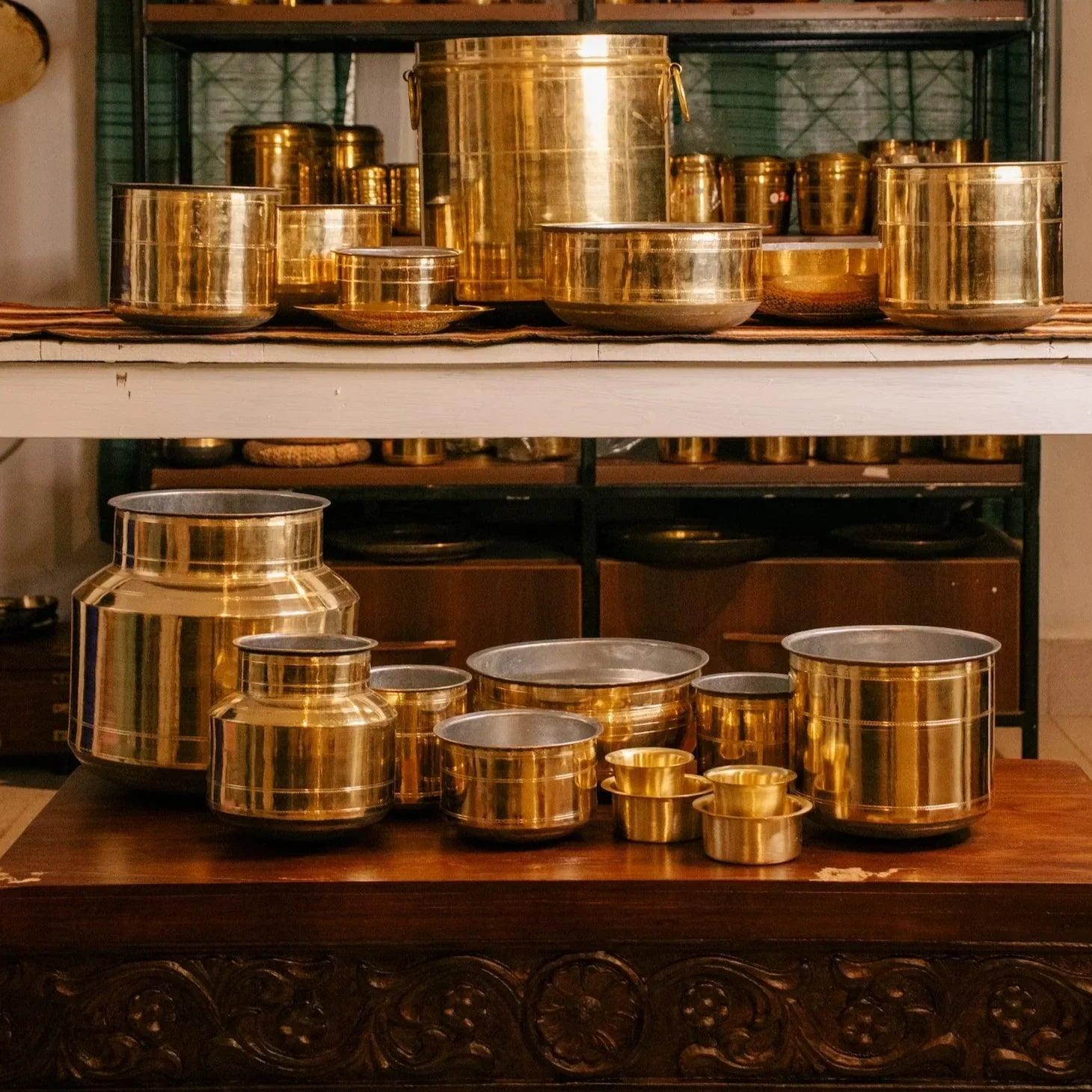In recent years, a resurgence of interest in traditional cooking methods has brought cast iron cookware back into the spotlight. Revered for its durability and versatility, cast iron has been a kitchen staple for centuries. Today, many home cooks and culinary enthusiasts are rediscovering the myriad benefits of using cast iron cookware. In this blog, we'll explore the advantages of cooking with cast iron, offer tips for maintaining these heirloom-quality pieces, and explain how to prevent rust from diminishing their longevity.
The Allure of Traditional Cast Iron Cookware
Cast iron cookware, including skillets, Dutch ovens, Kadai and Pans, has a storied history. Known for its excellent heat retention and even heating, cast iron is ideal for a wide range of cooking techniques, from searing and frying to baking and braising. Here are some key reasons why cast iron is making a comeback:
- Superior Heat Retention: Cast iron absorbs and retains heat exceptionally well, making it perfect for dishes that require consistent cooking temperatures.
- Versatility: Whether you're browning meat on the stovetop, baking cornbread in the oven, or cooking over an open flame, cast iron can handle it all.
- Natural Non-Stick Surface: With proper seasoning, cast iron develops a natural non-stick coating, reducing the need for synthetic non-stick pans that can release harmful chemicals when overheated.
- Durability: Built to last, cast iron cookware can endure decades of use. Many families pass down their cast iron pans through generations, adding a touch of history to every meal.
- Iron Fortification: Cooking with cast iron can contribute to your dietary iron intake, as trace amounts of the mineral leach into the food, which can be beneficial, particularly for those with iron deficiencies.
Maintaining Your Cast Iron Cookware
To fully enjoy the benefits of cast iron, it's essential to maintain it properly. Here are some maintenance tips to keep your cookware in top condition:
-
Seasoning: Seasoning involves coating the cookware with a thin layer of oil and heating it to create a non-stick surface. To season a new or rust-free cast iron pan:
- Clean the pan thoroughly with warm, soapy water and dry it completely.
- Apply a thin layer of vegetable oil or melted shortening to the entire surface.
- Place the pan upside down in an oven preheated to 375°F (190°C). Bake for about an hour, then let it cool in the oven.
-
Cleaning: After each use, clean your cast iron cookware while it's still warm.
- Avoid using soap; instead, scrub with a stiff brush and hot water.
- For stubborn food residue, use a paste of coarse salt and water to scrub the surface.
- Dry the cookware thoroughly with a towel to prevent moisture from causing rust.
- Oiling: After cleaning, apply a light coat of oil to the surface to maintain the seasoning and protect the pan from moisture.
Preventing and Dealing with Rust
Despite its durability, cast iron can rust if not properly cared for. Rust forms when iron reacts with oxygen and moisture. Here's how to prevent and manage rust:
- Avoid Prolonged Exposure to Water: Never soak cast iron in water or leave it to air dry. Always dry it immediately after washing.
- Store Properly: Store your cast iron cookware in a dry place. If stacking pans, place a paper towel between them to absorb any moisture.
- Re-Season Regularly: Frequent use and regular seasoning help maintain the protective layer that prevents rust.
-
Restore Rusty Pans: If rust does appear, don't worry. You can restore your pan with these steps:
- Scrub the rust off with steel wool until the bare metal is visible.
- Wash thoroughly with warm, soapy water, and dry completely.
- Re-season the pan as you would, like a new one.
Cast iron cookware is more than just a tool in the kitchen; it's a link to culinary traditions and a testament to quality craftsmanship. With its unparalleled heat retention, natural non-stick properties, and longevity, cast iron cookware is a valuable addition to any kitchen. By following the proper maintenance and rust prevention tips, you can ensure that your cast iron pieces remain in excellent condition, ready to create delicious meals for generations to come. So, dust off that old skillet or invest in a new one and enjoy the timeless benefits of cooking with cast iron.
The Craft of Cast Iron Cookware: Traditional vs. Modern Manufacturing
Cast iron cookware, renowned for its durability and versatility, is created through a meticulous process that has evolved over centuries. Understanding how cast iron cookware is made, both traditionally and with modern techniques, offers insight into the quality and characteristics of these beloved kitchen tools.
Traditional Cast Iron Cookware Manufacturing
- Sand Moulding:
- Pattern Making: Traditional cast iron cookware begins with a wooden or metal pattern of the item to be produced. This pattern is used to create a mold.
- Mold Creation: The pattern is placed in sand to create a negative impression. The sand is packed tightly around the pattern, which is then removed, leaving a cavity in the shape of the cookware piece.
- Melting and Pouring:
- Iron Melting: Pig iron, and sometimes steel are melted together in a blast furnace at temperatures around 2,800°F (1,538°C).
- Pouring the Molten Iron: The molten iron is then carefully poured into the sand molds. The high temperature ensures that the iron flows smoothly into all the details of the mold.
- Cooling and Breaking the Mold:
- Cooling: The filled molds are left to cool and solidify, which can take several hours depending on the size and thickness of the cookware.
- Removing the Casting: Once cooled, the sand mold is broken apart to reveal the rough cast iron piece.
- Finishing:
- Grinding and Polishing: The rough edges and surface imperfections are ground off, and the cookware is polished to a smoother finish.
- Seasoning: Traditionally, cast iron cookware is seasoned with a layer of oil, which is baked onto the surface to create a non-stick coating and protect the iron from rust.
Modern Machine-Made Cast Iron Cookware
- Precision and Uniformity:
- Computer-Aided Design (CAD): Modern manufacturing often begins with CAD to create precise patterns and molds, ensuring uniformity and consistency across batches.
- Automated Molding: Advanced machinery automates the sand molding process, producing molds more quickly and with greater precision than manual methods.
- Improved Materials and Techniques:
- Refined Alloys: Modern cast iron often includes refined alloys and additives to improve durability and heat distribution.
- Induction Furnaces: Induction furnaces provide a more controlled melting process, leading to better quality control and consistent material properties.
- Enhanced Finishing:
- Machine Grinding and Polishing: Automated grinding and polishing machines ensure a smoother and more uniform finish.
- Pre-Seasoning: Many modern cast iron cookware pieces are pre-seasoned at the factory using high-temperature ovens and advanced seasoning techniques, making them ready to use right out of the box.
Key Differences Between Traditional and Modern Manufacturing
-
Craftsmanship vs. Automation:
- Traditional: Emphasises handcrafted techniques, with skilled artisans manually creating patterns, pouring molten iron, and finishing each piece. This results in unique, sometimes slightly varied pieces.
- Modern: Utilises automated processes for increased efficiency and uniformity, producing cookware with consistent quality and appearance.
-
Material Quality and Control:
- Traditional: Relies on the skill of the foundry workers to manage material properties and ensure quality.
- Modern: Benefits from advanced material science and quality control, ensuring better consistency in the iron's composition and properties.
-
Surface Finish:
- Traditional: May have a rougher, more rustic finish due to manual grinding and polishing.
- Modern: Typically features a smoother, more polished surface thanks to automated finishing processes.
-
Pre-Seasoning:
- Traditional: Often requires the user to season the cookware multiple times before achieving a perfect non-stick surface.
- Modern: Frequently comes pre-seasoned with advanced techniques, allowing for immediate use and a reliable non-stick coating.
While the essence of cast iron cookware remains unchanged, the methods of production have evolved significantly. Traditional manufacturing emphasises artisanal craftsmanship and unique character, while modern techniques offer precision, consistency, and immediate usability. Both methods produce high-quality cookware that, with proper care, can last a lifetime and beyond. Whether you prefer the charm of handcrafted pieces or the convenience of modern pre-seasoned pans, cast iron cookware remains a treasured addition to any kitchen.
Read our FAQ Blog: Frequently Asked Questions About Cast Iron Cookware




2 comments
K Rajashekar
Hi
Dr keerthana Jayawardhan
I want return the product
Leave a comment
All comments are moderated before being published.
This site is protected by hCaptcha and the hCaptcha Privacy Policy and Terms of Service apply.